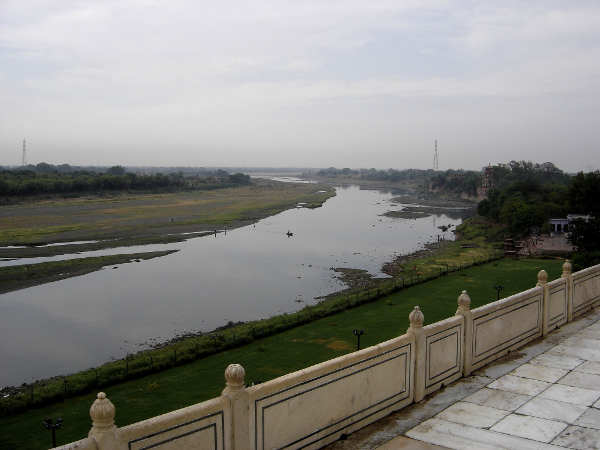On June 12, 2015, the NGT had directed the Haryana government to release 10 cumecs of water in the Yamuna from the Hathini Kund barrage. Environmental activists concerned at the degradation of Yamuna river have demanded firm action by the union water resources ministry on the directive of the National Green Tribunal (NGT) to ensure a minimal flow of water in this largest tributary of the Ganges.
 While monitoring implementation of the “Maili se Nirmal Yamuna Revitalisation Project”, NGT chairperson Justice Swatanter Kumar had taken to task the Haryana government for dragging its feet in implementing earlier decisions – both of the apex court and the NGT – to release water in the Yamuna.
While monitoring implementation of the “Maili se Nirmal Yamuna Revitalisation Project”, NGT chairperson Justice Swatanter Kumar had taken to task the Haryana government for dragging its feet in implementing earlier decisions – both of the apex court and the NGT – to release water in the Yamuna.
The NGT asked the state governments of Uttar Pradesh, Haryana, Uttarakhand, Rajasthan and Himachal Pradesh to interact with chairperson of the NGT principal committee Shashi Shekhar to sort out the issue of minimal flow in the Yamuna.
This committee was formed in January this year, and comprises secretary of the ministry of environment, secretary of water resources ministry, state secretaries of state governments, commissioners of all municipal corporations, and the vice chairman of Delhi Development Authority.
Mathura-based Braj Bachao Samiti members on Sunday (13 September 2015) demanded a firm commitment from the Haryana government on release of water in the Yamuna for the downstream towns and cities. The minimal flow was required to maintain the balance and the ecology of the river. The aqua life too needed water for survival, said Shravan Kumar Singh of the Braj Mandal Heritage Conservation Society in Agra.
This had been one of the principal demands of the Yamuna Muktikaran Abhiyan. Convener Radha Krishan Shastri said the NGT was doing a good job.
Last week, union Minister for Water Resources Uma Bharti said: “A pollution-free Yamuna is a commitment of our government and we will do whatever is required to rejuvenate both the Ganges and Yamuna.”
She said a committee of the UP, Haryana and Delhi government representatives will draw up a comprehensive plan for cleaning the Yamuna and a minimal flow as desired by the National Green Tribunal in the river shall be maintained.
She said the NGT orders on encroachments on the flood-plains of the Yamuna shall be strictly enforced. The demands and concerns of the people of Braj Mandal to cleanse Yamuna shall not remain unheard, she assured.
Sharing details of the NGT order, petitioner Madhu Mangal Shukla, a river activist, said he had complained of illegal and unregulated solid waste disposal by the local municipality. “A substantial part of the waste was being dumped on the river bed. Despite repeated requests, officials had failed to develop a trenching site and littering away just about everywhere the waste produced by the local people,” Shukla said.
In its order dated August 25, the NGT had asked the petitioner to shoot pictures and video of the work done by the local sanitation workers and the garbage dumps to nail the truth. Shukla said he would be submitting photographs and videos of the garbage heaps on the river bed. He said the local officials had misled the NGT and allegedly submitted false evidence.
Locals have regularly been complaining about how garbage was being dumped to push the river several hundred feet back. In course of time, encroachers begin raising structures on the Yamuna flood-plains.
The petitioner has highlighted how the holy towns with over 5,000 temples were being subjected to environmental deterioration. Already the green cover has been denuded and big chunks of land along the river banks have turned grey with new concrete structures.

